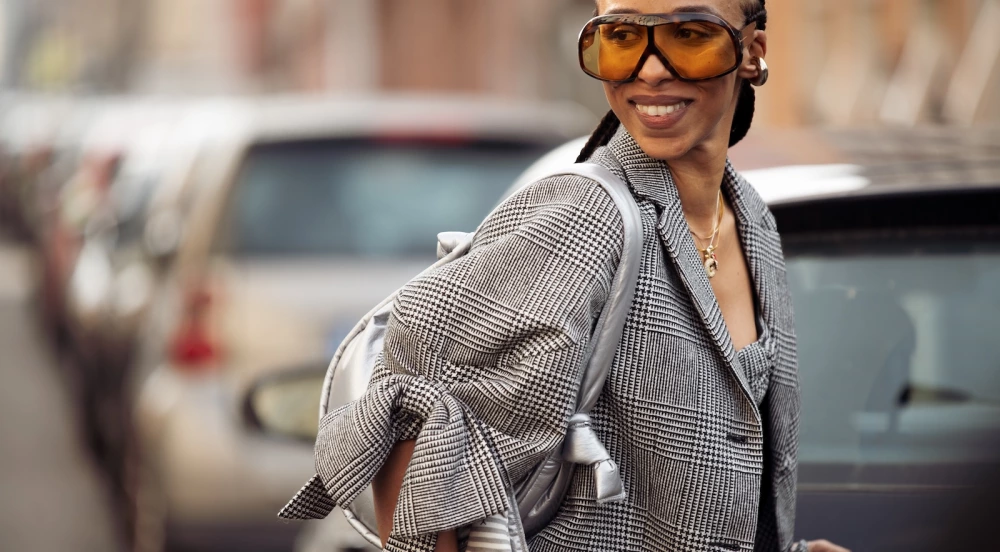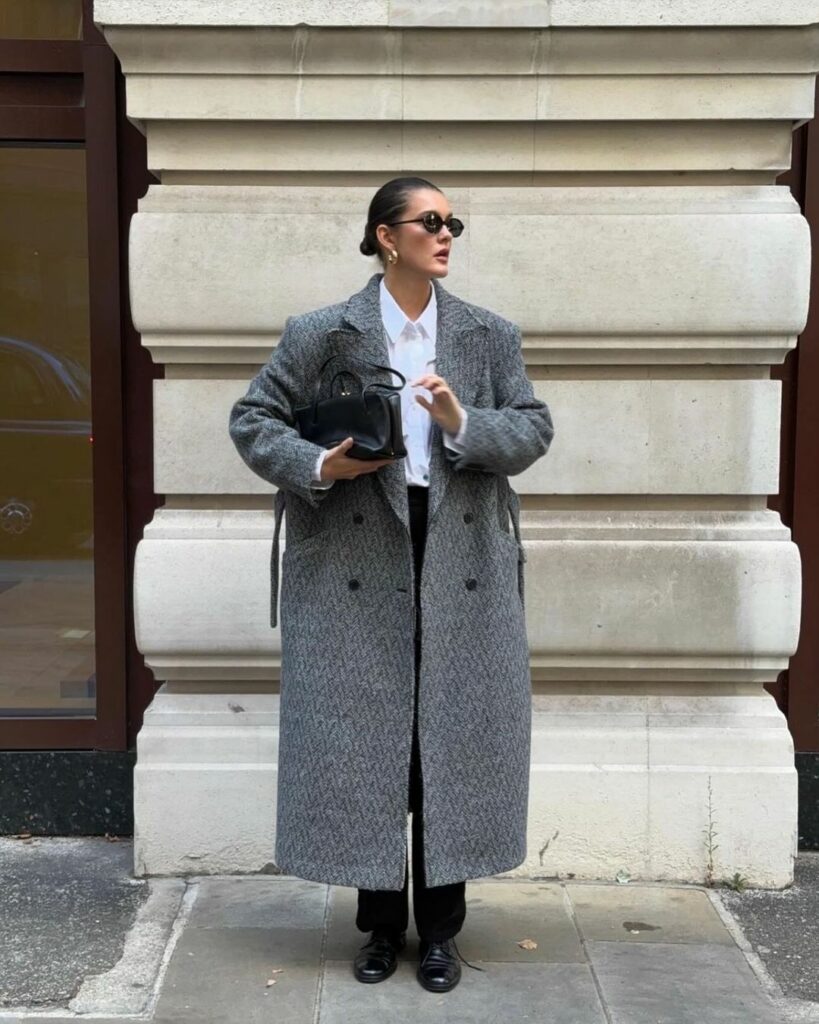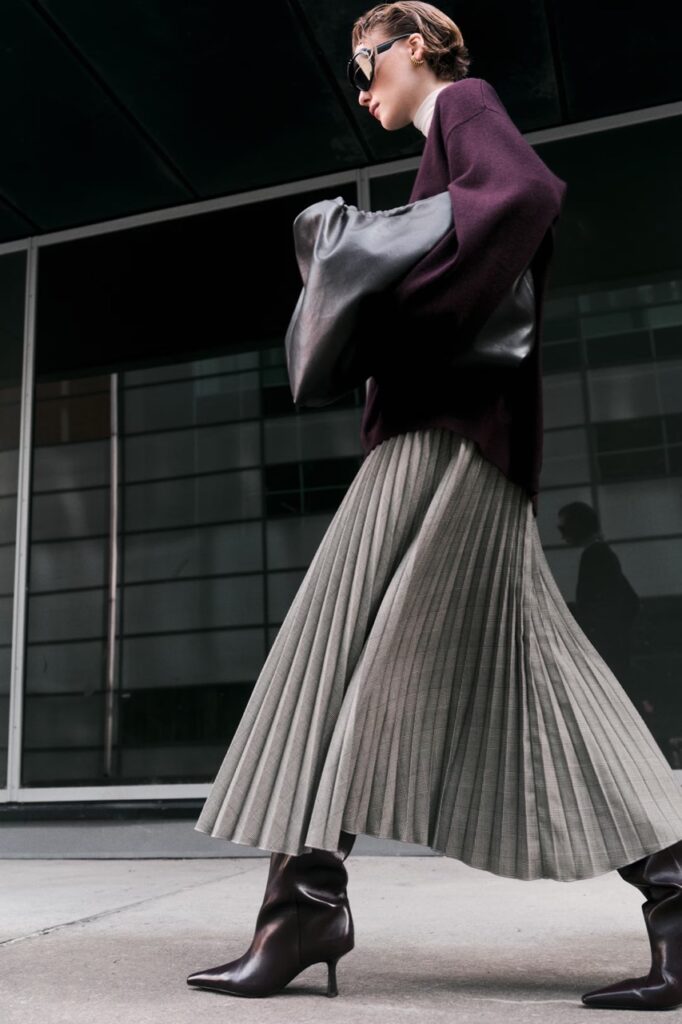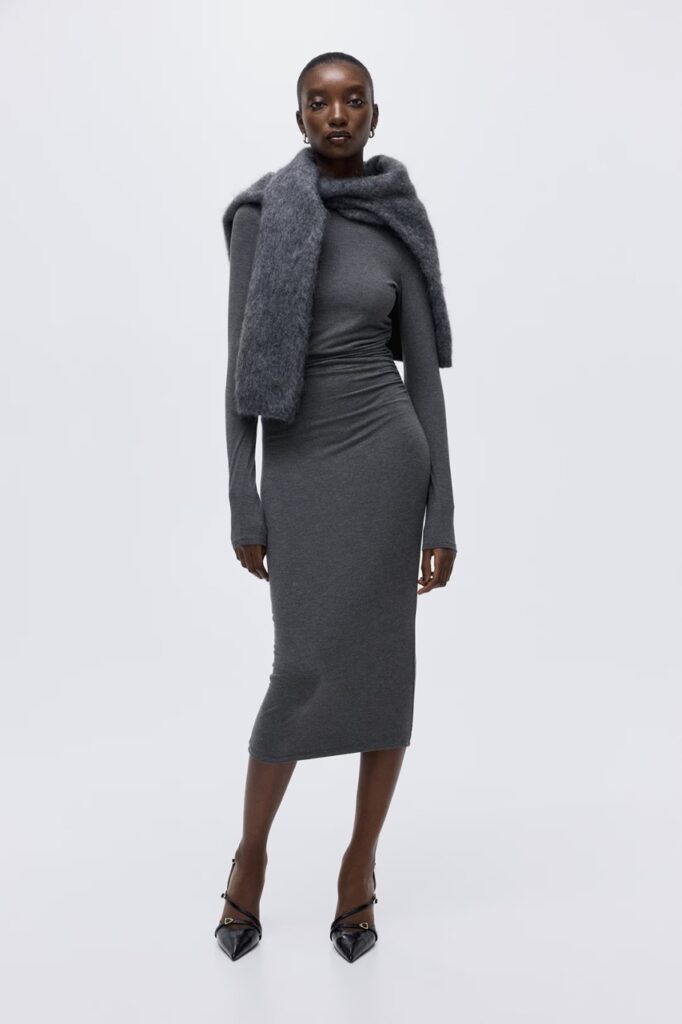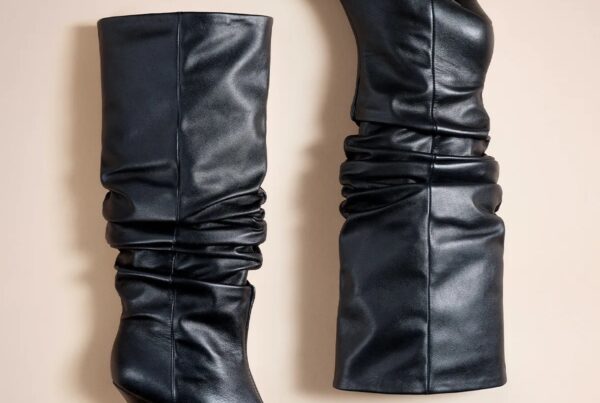In both fashion and interior design, color plays a crucial role in shaping aesthetics and influencing perceptions. Gray, often underappreciated, stands as a versatile and sophisticated choice that can elevate everyday style and enhance living spaces. This article explores the multifaceted applications of gray, detailing how it can serve as a neutral foundation in fashion wardrobes and interior design while also addressing contemporary trends and sustainable practices. By understanding the significance of gray, readers can make informed choices that reflect elegance and modernity in their personal style and home decor.
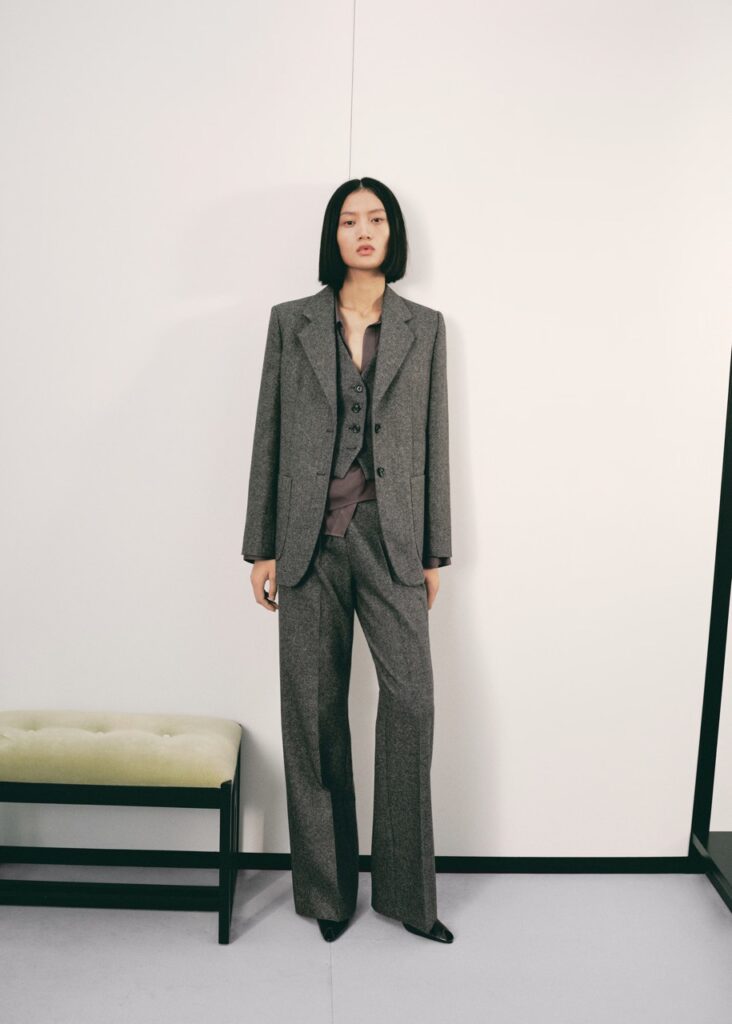
Table of Contents
Gray in Modern Fashion
In the rapidly evolving world of fashion, gray has emerged as a powerful player, establishing itself as a staple in both casual and formal attire. Gone are the days when gray was merely seen as a mundane color, often relegated to dreary rainy days. Today, it is celebrated for its versatility and elegance, seamlessly integrating into a variety of styles and aesthetics. This article explores the significance of gray in modern fashion, examining its stylistic adaptability and cultural relevance.
The Versatility of Gray
One of the most compelling reasons for gray’s prominence in contemporary fashion is its incredible versatility. It serves as a neutral base that complements virtually any color, allowing for a myriad of styling options. Designers and fashion enthusiasts alike utilize gray to create outfits that strike a perfect balance between boldness and subtlety.
- Casual Wear: In casual settings, gray can be effortlessly paired with bright hues, bringing an element of sophistication to everyday wardrobes. Think of a soft gray hoodie paired with vibrant joggers—an easy yet stylish look.
- Corporate Attire: Gray suits are synonymous with professionalism and authority. A well-tailored gray blazer teamed with a crisp white shirt can exude confidence while remaining approachable.
- Evening Wear: Gray has found its way into formal events as well, often featuring in gowns and tuxedos. The shade can convey elegance without the ostentation of brighter colors, making it ideal for sophisticated evening gatherings.
The Rise of Gray in Street Fashion
Street fashion has notably embraced gray, showcasing it in various forms from oversized sweatshirts to tailored trousers. This trend highlights a growing appreciation for comfort without compromising on style. Notable fashion influencers and celebrities are frequently spotted in gray ensembles, demonstrating its adaptability and timeless appeal.
Social media has played a pivotal role in promoting gray as a fashion choice. Platforms like Instagram and Pinterest are filled with outfit inspirations centered around gray, reinforcing its chic yet understated vibe. For instance, a trendy mix of gray shades in a layered outfit has become a popular choice among fashion-forward individuals, allowing them to express their personal styles creatively.
Gray in Sustainable Fashion
As sustainability becomes a key focus in the fashion industry, gray is increasingly viewed as a smart choice for ethical wardrobes. The color is often associated with minimalism, which harmonizes with the eco-conscious ideals of reducing excess and promoting longevity in fashion. Many brands are now creating collections that prioritize neutral tones, including gray, focusing on timeless designs that transcend seasonal trends.
Moreover, materials like organic cotton and recycled fabrics are now dyed in gray hues to align with sustainable practices. By choosing gray garments, consumers can make a style statement while supporting ethical fashion initiatives. Brands like Patagonia exemplify this movement, offering stylish gray pieces made from sustainable materials, empowering eco-aware shoppers to blend fashion with responsibility.
Cultural Significance of Gray
Gray also carries cultural connotations that further enrich its status in modern fashion. Historically, the color has been associated with balance and neutrality, making it a favored choice for those seeking to convey calmness or stability. In various cultures, gray is seen as sophisticated, embodying wisdom and maturity—attributes that resonate well in today’s more complex fashion landscape.
As the fashion industry continues to evolve, gray remains a vital part of its fabric. With its ability to adapt and resonate across different contexts—be it formal, casual, or ethical—gray is not just a color; it’s a statement, encapsulating the essence of modernity in style. As we move forward, one can expect gray to maintain its influential presence, adapting further to reflect the shifting paradigms of fashion culture.
Elevating Spaces with Gray
Gray has established itself as a pivotal color in interior design, transforming spaces into sophisticated havens that speak to both elegance and versatility. As we delve deeper into the intriguing aspects of gray, we uncover how this understated hue can significantly elevate the ambience of any room, creating environments that resonate with modern aesthetics.
The Psychology of Gray in Design
The effects of color on human psychology cannot be overstated, and gray is no exception. Often associated with balance, neutrality, and calmness, incorporating gray into your space can foster a serene environment. Many designers leverage this psychological aspect to encourage contemplation and relaxation, making gray an ideal choice for living rooms, bedrooms, and even offices.
Creating Depth and Character
One of the remarkable qualities of gray is its ability to create depth and character in a room. Unlike vibrant colors that can overwhelm a space, gray provides a soft backdrop that allows other elements – be it furniture, accessories, or artwork – to stand out. Here are a few suggestions to make the most of gray in your interiors:
- Layering Textures: Use various materials in shades of gray, such as wool blankets, velvet cushions, or pebble stone decor, to create visual interest.
- Accent Walls: Consider a darker shade of gray on one wall to add depth while keeping the other walls lighter to maintain a balanced look.
- Complementary Colors: Gray pairs beautifully with a range of colors. Bright yellows, deep blues, or earthy greens can enhance gray’s elegance while adding warmth to the space.
Urban Chic: Gray in Modern Spaces
In contemporary design, gray exudes an urban chic aesthetic, perfect for urban apartments and modern homes. Its versatility allows for compatibility with both minimalist and more elaborate styles. For instance, in open-concept living spaces, gray can unify different areas, offering a cohesive flow. Furthermore, gray can enhance features like concrete walls or exposed brick, enriching the room with an industrial vibe.
Eco-Friendly and Sustainable Choices
As sustainability becomes increasingly important in design, gray stands out as a color that can denote eco-friendliness. Natural materials that showcase gray tones, such as reclaimed wood flooring, stone countertops, or recycled glass tiles, not only look stunning but also promote sustainable living. When selecting furnishings, consider choosing pieces crafted from sustainable or ethically sourced materials in gray tones, reinforcing your commitment to the environment.
Accessorizing with Gray
When it comes to accessorizing, gray offers unparalleled adaptability. From chic throw pillows to decorative rugs, gray can enhance the overall aesthetic without overshadowing other design elements. Consider incorporating:
- Artworks: Black-and-white photographs or abstract art in soft gray frames can seamlessly blend into gray-themed spaces.
- Lighting: Gray lamps or light fixtures can add sophistication and create a warm glow that complements the room’s ambiance.
- Metallic Accents: Silver or brushed nickel fixtures and accessories pair beautifully with gray, adding a touch of luxe to the space.
In conclusion, adopting gray in your designs can truly elevate any space, marrying functionality with aesthetics. As you contemplate your next design project, remember that gray’s serene palette offers the foundation for a sophisticated and inviting atmosphere. By integrating thoughtful accents and maintaining a balance of textures, your space can become a sanctuary that embodies both modern style and enduring elegance.
Versatility of Gray in Design
When it comes to design, gray emerges as a powerhouse of versatility, seamlessly bridging the gap between classic and contemporary aesthetics. Its unique ability to adapt across various styles, materials, and settings makes it a favorite among designers and homeowners alike. In this section, we will explore the multifaceted applications of gray in design, from interiors to fashion and branding, highlighting how this neutral hue can elevate any project.
The Role of Gray in Interior Design
In the realm of interior design, gray serves as an invaluable neutral, providing a calm backdrop that allows other colors and textures to shine. Its ability to evoke sophistication and modernity is unmatched, making it suitable for various spaces, from cozy homes to luxurious commercial environments. Here are several ways gray enhances interior design:
- Creating Depth: Subtle variations of gray can create layers within a room. For instance, pairing a darker charcoal gray with lighter gray tones can add depth and interest without overwhelming the space.
- Complementing Color Palettes: Gray is a chameleon, complementing a wide range of colors. Whether it’s a warm blush or a bold navy, gray acts as a balancing element that harmonizes the overall look.
- Enhancing Natural Light: Lighter shades of gray can reflect natural light, brightening up a space while maintaining a sophisticated and serene atmosphere.
Gray in Fashion Design
The fashion industry has embraced gray as a staple hue, offering endless possibilities for styling. Designers often utilize gray to convey modern elegance and versatility in their collections. Here’s how gray stands out in the world of fashion:
- Seasonless Appeal: Gray transcends seasons, proving itself to be a timeless color choice. From cozy winter coats to breezy summer dresses, gray remains a relevant option throughout the year.
- Mix and Match: The neutrality of gray allows it to be easily paired with diverse patterns and colors. This flexibility encourages individual expression through unique combinations.
- Textural Interest: Different fabrics in shades of gray, such as silk, wool, or denim, can add a tactile dimension to an outfit, enhancing its visual appeal.
Branding and Graphic Design
In branding and graphic design, gray exudes professionalism and reliability. Brands that utilize gray often convey a sense of quality and sophistication. Here are some insights on how this color finds its place in branding:
- Timeless Compositions: Gray is often used in logos and marketing materials to create a timeless and classic look, appealing to a broad audience.
- Contrast and Legibility: Gray, when used effectively, can create striking contrasts with other colors, enhancing legibility and overall design clarity.
- Neutral Backdrops: Gray backgrounds allow the foreground elements, such as logos and textual content, to stand out, making it an ideal canvas for effective communication.
The Future of Gray in Design
Looking toward future design trends, gray is expected to maintain its relevance. As consumers increasingly gravitate toward sustainable and minimalistic design, the understated elegance of gray will likely resonate deeply. Its versatility will continue to inspire innovative applications across different materials and aesthetics. For more insights on emerging design trends, you can explore Architectural Digest, where experts discuss the evolution of design elements including color choices.
Embracing Gray for Timeless Elegance
In the world of design and fashion, color serves as a pivotal element that shapes our perception of spaces and style. Among the kaleidoscope of colors, gray stands out as a symbol of sophistication and versatility. In this article, we will explore the exquisite qualities of gray, delve into its historical connotations, and examine how it can be embraced in various contexts to create an ambiance of timeless elegance.
The Historical Appeal of Gray
The allure of gray dates back centuries, deeply rooted in various cultures. Originally seen as a symbol of humility and wisdom, gray tones emerged in fashion and art as a way to reflect sophistication and serenity. The Renaissance artists often employed gray for its neutrality, allowing other vibrant elements to stand out while providing a grounding effect. As we moved into the modern era, designers and architects recognized gray’s ability to evoke timelessness and a sense of peace, making it a common choice in contemporary aesthetics.
Gray in Contemporary Fashion
In today’s fashion landscape, gray has transcended mere neutral status to become a celebrated shade that evokes elegance and refinement. From haute couture runways to everyday wardrobes, gray can be styled to suit a myriad of tastes and occasions. Here are some ways gray can be embraced in fashion:
- Layering and Textures: Combine different shades of gray with varying textures, such as wool, silk, and cotton, to create depth and interest in outfits.
- Monochromatic Looks: An all-gray ensemble with varying tones can provide a chic and sophisticated aesthetic that is visually stunning.
- Elegant Accessories: Incorporate gray accessories, like bags or shoes, to add a subtle accent to a colorful outfit.
Gray in Interior Design
Just as gray in fashion exudes sophistication, it equally transforms interiors into elegant spaces. Embracing gray in home décor can create a serene and inviting atmosphere, making it a go-to choice for designers. Here are a few suggestions for incorporating gray into your living spaces:
- Accent Walls: A deep gray accent wall can serve as a stunning backdrop for artwork and furniture, providing a modern touch.
- Gray Furnishings: Invest in gray sofas, chairs, or rugs to establish a chic foundation in your design scheme.
- Soft Textiles: Use gray in textiles for curtains, throws, and pillows to create a cozy, layered look that invites comfort.
Balancing Gray with Other Colors
While gray is remarkable on its own, its real beauty lies in its ability to harmonize with a variety of colors. Whether in fashion or interior design, here are key combinations to achieve balance:
- Accent with Vibrant Colors: Pairing gray with yellows, greens, or bold reds can create striking contrasts, adding energy to an otherwise subdued palette.
- Subtle Earth Tones: Merging gray with browns, beiges, or soft pastels establishes a calm and grounding effect, ideal for creating a tranquil environment.
- Neutrals with Texture: Combine gray with other neutrals—like whites and blacks—and focus on different textures to enhance sophistication while maintaining elegance.
Gray in Seasonal Trends
As fashion and design evolve, gray remains a constant presence. Each season, it garners new interpretations, proving its statement-making ability through various trends. For instance, during autumn and winter, deeper, warmer grays tend to dominate, while spring and summer might see lighter, cooler shades coming to the forefront. Designers often highlight gray in collections, showcasing its ability to transcend trends while remaining effortlessly stylish.
As you embrace gray, you not only draw on its rich history and versatility but also incorporate it into a lifestyle marked by elegance and refinement. This timeless hue invites introspection and sophistication, making it a preferred choice in both fashion and interior design. For more inspiration on using gray effectively in your wardrobe and home, consider exploring resources from reputable design blogs like Dezeen, which regularly features expert insights on color trends.
Gray is increasingly recognized as a versatile and sophisticated color in both fashion and interior design. In fashion, it serves as a neutral base that can be paired with vibrant colors or mixed with various textures to create depth and style. Gray has found a prominent place in casual wear, corporate attire, and evening wear, making it an essential choice across all occasions. Similarly, in interior design, gray fosters a serene environment, enhances natural light, and complements diverse color palettes, establishing itself as both a timeless and modern element.
To effectively incorporate gray in your wardrobe or home, consider layering different shades and textures to create visual interest. Pair gray with vibrant colors for a striking contrast, or use it with earth tones for a calming effect. In interiors, opt for gray furnishings or accent walls to create an elegant backdrop, while accessories in gray can elevate your overall aesthetics without overpowering the design. Embracing gray not only reflects sophistication but also aligns with sustainable and minimalistic trends in contemporary design.


